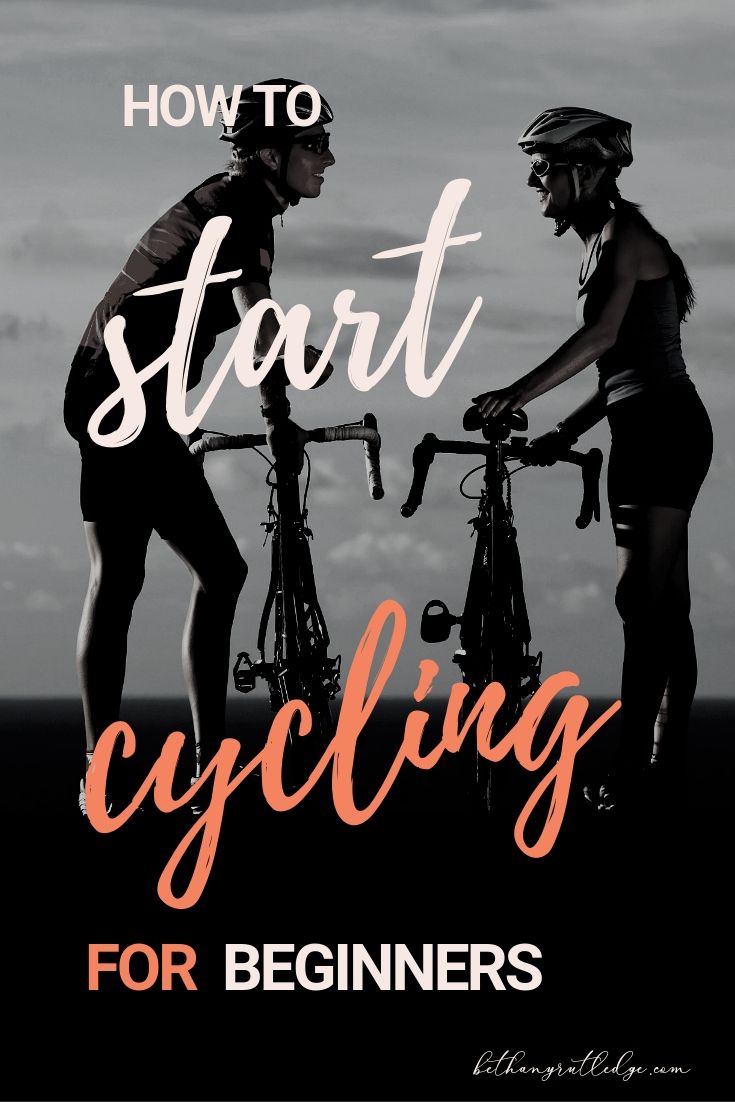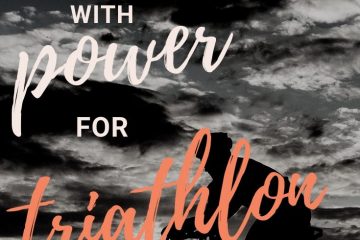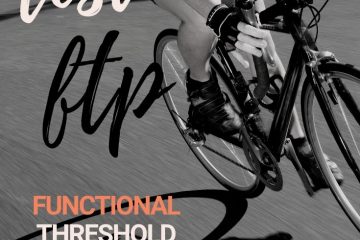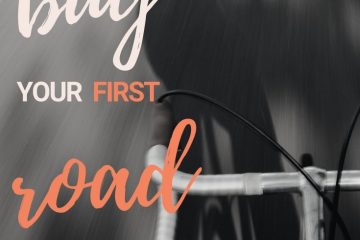Ultimate Guide: How to start cycling

What beginner cyclists need to know about how to start cycling, the gear you need for cycling, and how to stay motivated cycling.
My first bike ride as an adult was memorable. In a rush to start training, I bought a bike at a discount store, Play It Again Sports. It seemed like a great idea; I could get a bargain and a bike immediately. They had exactly one road bike, and it was $400, much less than the price of a new bike at the store. It seemed a little…large…but I figured I would make it work.
I invited a friend to ride on a local rails-to-trails path. I jumped on and started pedaling in my run shorts and running shoes atop clipless pedals. Slowly—because I didn’t know how to switch gears and I could barely even reach the handlebars! We went for an eight-mile ride, or maybe it was six, and it was an absolutely torturous experience.
My bike didn’t fit, I couldn’t shift gears, clip in, or endure the pain of riding more than a few miles at a time. How was I ever going to even finish the bike leg of a sprint tri much less become a strong, competent rider?
Since you’re reading this post, you’re already several steps ahead of where I was!
Today we’ll talk about the gear needed to start cycling, how to start cycling, and how to motivate yourself to keep cycling.
Gear needed for cycling
Beginner Cycling Gear
What you need: A bike to use during the race, a helmet, flat kit, and water bottle.
The bike is the biggest financial barrier to entry. For a new athlete, it’s a huge commitment—a massive outlay of cash for a sport you’re not sure you like. That’s why I recommend waiting until after your first race to purchase a bike.
Why? Well for newbies coming into the sport, what you know on day one and what you will know after a few months of training are light years apart. (In other words, you’re likely to buy the wrong bike, or the wrong three bikes, like I did.)
For your first sprint tri, train at your local spin class, borrow a bike, or use the old cruiser in the basement. After you get hooked on the sport, you’ll have a much better idea of the bike you need.
If you absolutely can’t borrow one, then you can rent one for around $40 to $100 a day. Keep in mind that try said bike before race day, you’ll need to rent it more than once.
You also need a helmet. Know that USA Triathlon rules mandate helmets are when you’re on your bike before, during, and after the race. An entry-level helmet will run you about $40. Note that a more expensive helmet doesn’t mean it protects your head better; it’s because of other features like venting, less weight, or cool colors.
It’s definitely worth picking up a pair of tri shorts, like we discussed in our common concerns section. An entry-level pair will run you about $50.
You need a water bottle ($5) and a cage ($5-$15) to hold it if you don’t already have one. Finally, you need the contents of a flat kit—tire levers (2), a bike pump or CO2 cartridges, an inflator, a multi-tool, and a spare tube, plus a pouch to hold these items. Your best bet is to go to a local bike shop and ask them to help you assemble a kit. That way they’ll make sure you get the right sizes for everything. The contents of the kit will run you about $50.
Now let’s talk about some dos and don’ts as you prepare to hit the road!
Top Beginner Cyclist Dos and Don’ts
If you’ve read the section on what you need, then you you’re armed with a bike that you bought, borrowed, or stole, a kit or some shorts, a helmet, a way to carry hydration and nutrition, a flat kit, and the knowledge of how to use it. Now let’s get to training! Here are some top dos and don’t’s for getting started.
Keep Cycling Training Simple
You have plenty of time to worry about metrics, power, interval schemes, and progression later. For your first race, what’s important is your endurance—building up to the distance you will ride and riding frequently enough to build some fitness.
Aside from that, your number one priority is safety, which means learning the rules of the road, clipping in and out, and riding with traffic and other cyclists.
Related: Is there a perfect cycling cadence?
Don’t Let Lack of Bike Access Deter You.
Many beginners join our tri club without a bike. We encourage these athletes to train in a spin class or cycling studio. Eventually, you’ll want to ride outside on the bike you’ll use on race day, but don’t let lack of a bike deter you from getting started!
Do Learn Basic Riding Skills.
If available, a group cycling lesson or beginner cyclists ride is a great place to start. For instance, we host a beginner cyclist clinic a few times a year where we review basics such as shifting gears, clipping in and out, safety, and more.
Do Ride With Others.
Riding with a group is also great for safety reasons. Even if you don’t feel comfortable riding in traffic or on the main roads, you should know the etiquette of doing so. After all, during a race, you’ll be riding with others on at least partly open roads.
Check with a bike shop or local tri club to find out more about group rides. A lot of shops also have women-specific rides, which although not necessary can limit the intimidation factor somewhat.
Want some virtual or in-person company on those long runs? Training is more fun with community. Check out Atlanta Tri Club for group training and Energy Lab for triathlon and swim coaching!
Do Ride Outside.
If you have a bike trainer or indoor option, you can do a large portion of your bike training inside. However, you need to do some training outside. A good way to split is doing your longer ride outdoors and your two shorter sessions indoors each week.
Handling skills, confidence with other riders, clipping in and out, and fitness to ride over varied terrain are a few of the skills best practiced outdoors.

Cycling Hurdles to Tackle
The journey to becoming a confident, competent rider starts with work on these issues:
Bike Handling Skills
Put simply, handling skills include all of the following:
- How to pick up bottles and food while riding. How to navigate around obstacles and traffic safely.
- How to clip in and out quickly and efficiently while the bike is moving.
- How to hold your line and maintain proper distance while riding with others.
You’ll develop many of these skills naturally as you ride more. One best practice is to ride frequently with more experienced cyclists and seek to emulate them. A parking lot (without cars) or a grassy field, is a great place to practice skills.
If you have trouble taking one hand off the handlebar to pick up a bottle or nutrition, start by picking up your hand for short periods of time. For instance, take off your right hand and count to ten. Then try the same with your left hand. Repeat that three times during your ride. Each time you ride increase the time until your comfortable holding on with one hand.
Use the same principle to practice clipping in and out. If you have a trainer at home, you can practice becoming comfortable clipping out with your right leg, then your left leg. It’s normal to favor one leg, but learn to clip out with both. After you’ve gotten comfortable, then it’s time to move outside. If you can practice in a parking lot or the field first, do it. It’s normal to have a few spills while mastering this skill.
Drafting, or riding too closely in another rider’s slipstream, is illegal in triathlon because it confers an unfair advantage. USA Triathlon mandates three bike lengths between riders. Do most of your rides without drafting, to practice for race day and for safety reasons. It’s very unsafe to ride closely behind another rider with a tri bike because (unless you have electronic shifting) your hands aren’t on the brakes.
Related: How to really get faster running this year
How to stay motivated cycling
I received a note today from a fellow runner and coach who is unfortunately injured and temporarily unable to run. He asked for advice on the best way to start cycling with the goal of staying healthy and fit. I replied that even though he didn’t want a lot of hassle getting started, I thought he might be best served by attaching a concrete goal to his pursuit.Why? Because I think we need goals, metrics, and accountability in order to drive us to action and then consistency.
When you’re getting started with any new activity you first consider what is safe and appropriate to do and then what you’re willing to do. We’ll focus on the will, not will as in is there a spot in my calendar, but will meaning what is going to be interesting and motivating enough to make it worthwhile.
Look at walking as an example. Everyone knows that walking is good for heart health and certainly better than sitting behind a desk for 10 hours a day. But walking, for someone who doesn’t walk much, probably sounds boring. Plus, how do you determine whether you’re being successful at walking?
Should you congratulate yourself if you take the stairs or park farther away one time or does it have to be daily? Is a good starting distance around the block or does it need to be a certain number of miles? Is three times a week enough? Should you be huffing and puffing or keep the pace conversational?
These are the questions that come up when starting any new activity especially if the exerciser doesn’t have past experience with sports and structured programs to draw from. How do you know how much to do and when you do know you’ve done enough? In the case of my friend, a lifelong runner and run coach, the answers to many of those questions are obvious.
But when starting something completely new, even with something as simple as walking, some sort of simple metrics, accountability, and a goal helps us know how to succeed and why they’re doing it in the first place.
Enter the 10,000 steps campaign, While there are no statistics on the overall success of the program worldwide (which would be really hard to define and aggregate) there are hundreds of case studies from all over the world from companies and individuals who’ve successfully lost weight and improved various health markers. The program gave them something to rally around rather than just simply knowing they ‘should’ walk more every day.
Now let’s apply that same principle to cycling. Many people feel that if they aren’t a serious athlete competing in races, then there’s no reason to join a group, start an organized program or push themselves.
I would argue that the same principle applies as did to our walkers.. without goals, metrics, and community, it’s too hard to stay consistent. Therefore, as advice to the new cyclist, I would suggest finding these three items to help you along the way:
Pick a cycling goal–
The goal can be as big as targeting a time trial or century, or as small as having the confidence to join a local group ride.
Utilize metrics–
If you’re working with a coach or attending a studio like Energy Lab, we can help with that part. You should test to set a baseline, then repeat that testing frequently to monitor progress. Your goals will shape what kind of testing and how often you do it. If you’re on your own, then I would recommend checking out the resources of Trainer Road to give shape to your cycling program.
Related: How to stay motivated running
Find a cycling community–
A community adds accountability and fun. Naturally, we would recommend a community like Energy Lab or Atlanta Tri Club. If that’s not feasible, many bike shops have regular group rides.
Whatever you decide, remember that getting started cycling is the hardest part!
More training resources for you
- Ultimate Guide: How to start cycling
- Find your runner personality [ to go faster]
- Top 4 worst new runner mistakes
- How does Garmin race predictor work?
- The real deal on getting back in shape after baby
- How to [really] improve your running

Hi, I’m Bethany–coach, author of Courage to Tri, 2x Kona qualifier, and twin mom. I believe if you have a body you’re an athlete. Grab my free 5k plan to start your own athletic journey.

More cycling resources for beginners
A Complete Guide to Cycling for Beginners – I Love Bicycling
Cycling for Beginners and Budgeters – Lacee Does Life
How to use CO2 for cycling – a beginners guide
Bike gears: shifting explained for beginners – Cycling Weekly
Cycling tips: 25 essential pieces of riding advice for beginners
The Beginners’ Blueprint to Road Cycling Greatness
Have questions or comments? We always welcome feedback. Email us and let us know how we can help.



13 Comments
Kelly · July 22, 2019 at 11:31 pm
What a great overview. It’s so comprehensive and great for first-timers!
Deborah Brooks · July 23, 2019 at 12:28 am
I bought a used bike the first time to make sure I was really going to use it before investing in a road bike. These are really great tips!
Bethany · July 24, 2019 at 3:44 pm
Yes, I might have had a different story if I actually bought a used bike that didn’t fit terribly! Thanks for commenting.
Nicole from Fitful Focus · July 23, 2019 at 1:29 am
Thank you for all the great tips! I haven’t gotten into cycling, YET, but I can see it in my future!
Bethany · July 24, 2019 at 3:44 pm
Nicole, I think you would love cycling. If you try it let me know!
Angela · July 23, 2019 at 2:14 am
These are all such great tips! I remember when I started cycling, I didn’t know where to start!! I’ve been at it for 8 years now and still continue to learn!!
Bethany · July 24, 2019 at 3:43 pm
Thanks for commenting, Angela. Glad you liked the indoor cycling tips.
Abbey Sharp · July 23, 2019 at 3:02 am
Great tips! I am more of a spin gal myself but these tips are so helpful
Bethany · July 24, 2019 at 3:43 pm
I love indoor cycling as well! It’s definitely more time efficient.
Leslie · July 24, 2019 at 3:38 am
Thank you so much for putting this list together. This is perfect for anyone who needs some good pointers!
Bethany · July 24, 2019 at 3:41 pm
Thanks Leslie. I’m glad you enjoyed the ideas on how to get started cycling.
Should I use a fan for indoor cycling training? — Bethany Rutledge · July 23, 2019 at 5:10 pm
[…] Related: What you need to know to start cycling. […]
How to buy your first bike — Bethany Rutledge · July 27, 2019 at 1:39 pm
[…] Related: How to start cycling from scratch […]
Comments are closed.